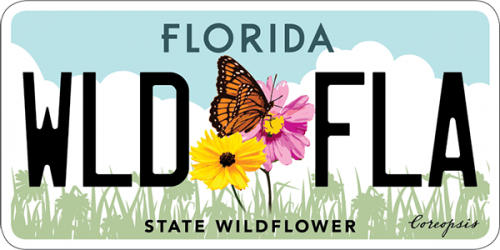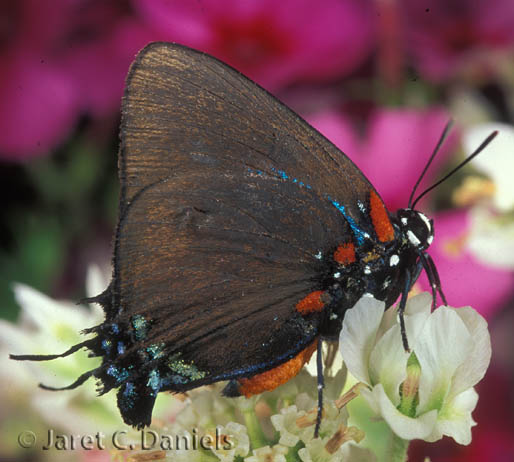- Family name: Lycaenidae/Gossamer Wings
- General description: Male iridescent blue with broad black borders and large black forewing stigma; female black with dusty blue scaling limited to wing bases. Ventral hindwing dull black with two long tails and red basal spots. Abdomen red.
- Field Marks: large for a hairstreak; long hindwing tails; abdomen red; ventral hindwing black with red basal spots; dorsal wings surfaces iridescent blue
- Sexes: appear different
- Wingspan: 30-42 mm
- Life Cycle: Egg: whitish, flattened, laid singly on host leaves Mature larva: green Chrysalis: dark brown
- Number of Generations: multiple
- Flight Season: February-November
- Abundance: Common
- Habitat: parks, woodlands, forest margins, swamps
- Larval Host Plants: Mistletoe (Phoradendron serotinum)
- Similar Species:
- Additional Information: Adults spend much of their time high in the canopy; most often encountered at flowers
- Range in Florida
 The Florida Wildflowers & Butterflies projects at the Florida Museum are sponsored in part by the State of Florida and the Florida Wildflower Foundation, Inc.
The Florida Wildflowers & Butterflies projects at the Florida Museum are sponsored in part by the State of Florida and the Florida Wildflower Foundation, Inc.
